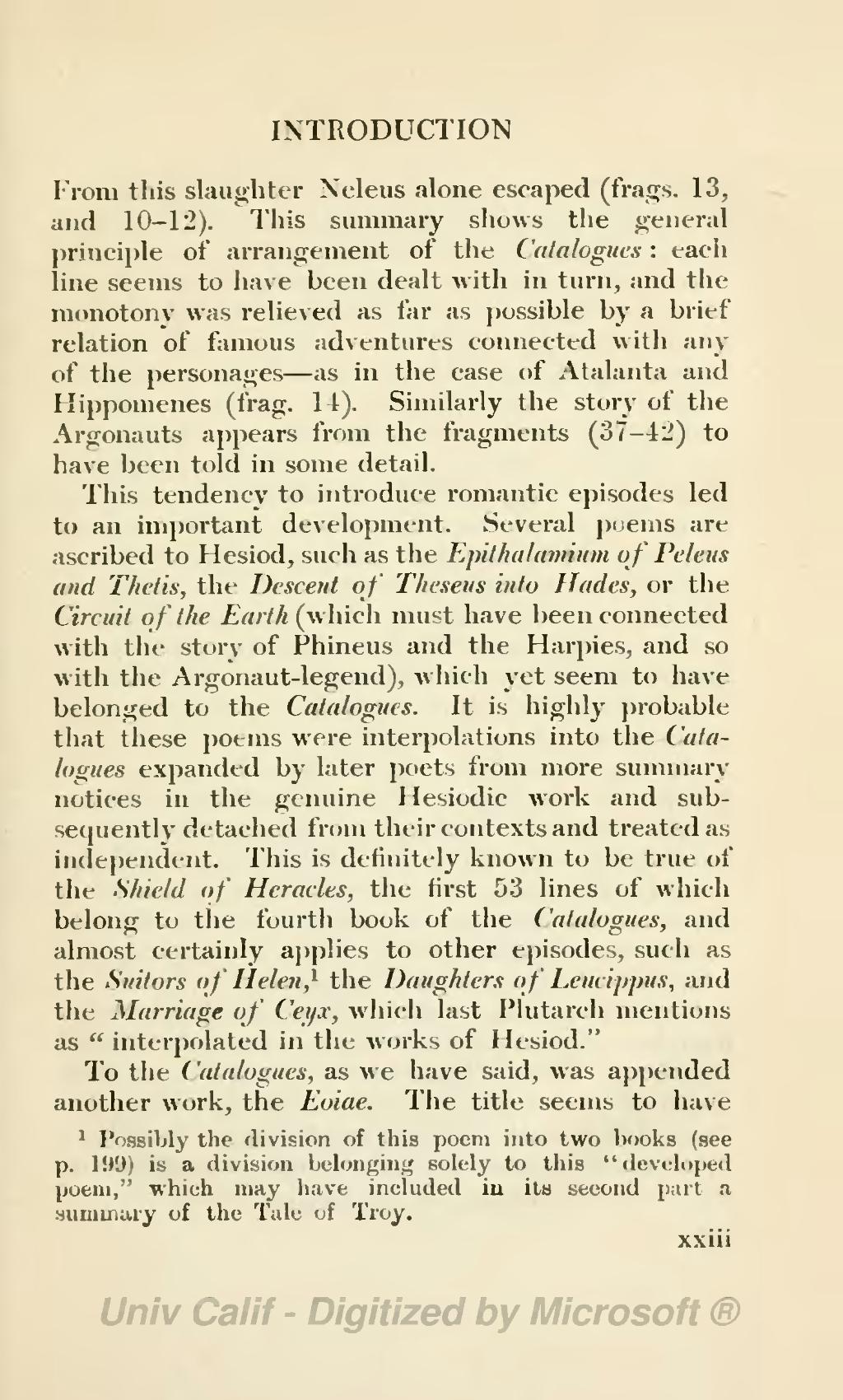INTRODUCTION
From this slaughter Neleus alone escaped (frags. 13, and 10-12). This summary shows the general principle of arrangement of the Catalogues: each line seems to have been dealt with in turn, and the monotony was relieved as far as possible by a brief relation of famous adventures connected with any of the personages—as in the case of Atalanta and Hippomenes (frag. 14). Similarly the story of the Argonauts appears from the fragments (37-42) to have been told in some detail.
This tendency to introduce romantic episodes led to an important development. Several poems are ascribed to Hesiod, such as the Epithalamium of Peleus and Thetis, the Descent of Theseus into Hades, or the Circuit of the Earth (which must have been connected with the story of Phineus and the Harpies, and so with the Argonaut-legend), which yet seem to have belonged to the Catalogues. It is highly probable that these poems were interpolations into the Catalogues expanded by later poets from more summary notices in the genuine Hesiodic work and subsequently detached from their contexts and treated as independent. This is definitely known to be true of the Shield of Heracles, the first 53 lines of which belong to the fourth book of the Catalogues, and almost certainly applies to other episodes, such as the Suitors of Helen,[1] the Daughters of Leucippus, and the Marriage of Ceyx, which last Plutarch mentions as "interpolated in the works of Hesiod."
To the Catalogues, as we have said, was appended another work, the Eoiae. The title seems to have
- ↑ Possibly the division of this poem into two books (see p. 199) is a division belonging solely to this "developed poem," which may have included in its second part a summary of the Tale of Troy.
xxiii
